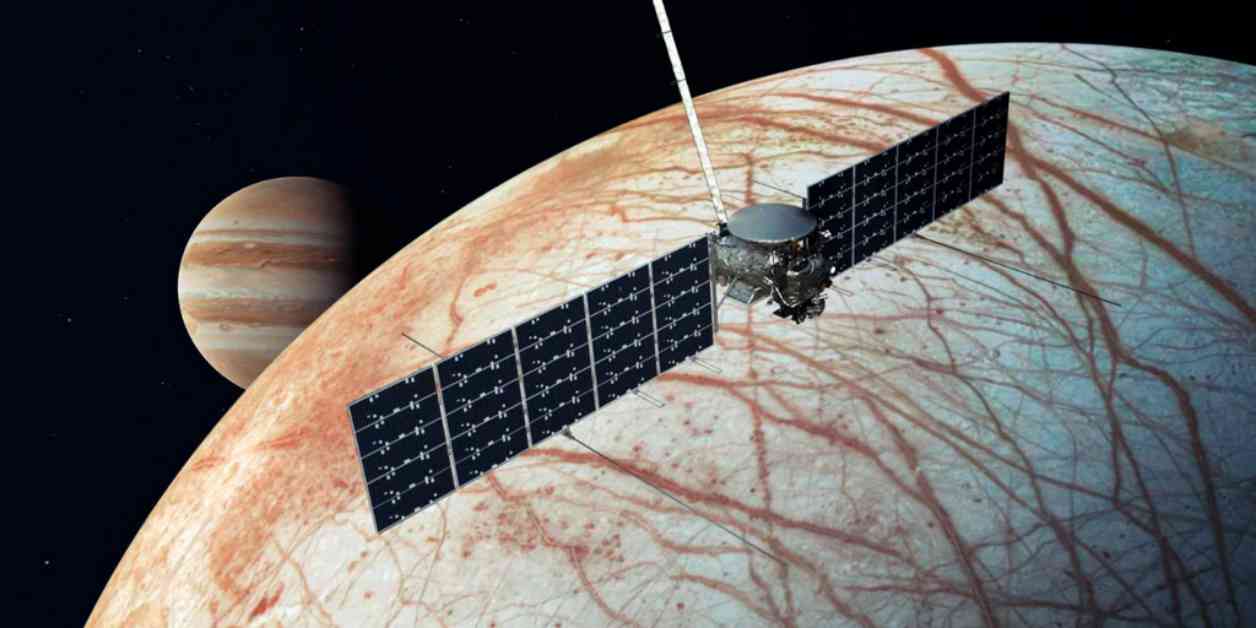NASA’s Europa Clipper spacecraft is on a mission to explore Jupiter’s moon Europa, which is considered one of the best chances for discovering life beyond Earth. The spacecraft will investigate whether Europa’s conditions, such as its ocean beneath a thick icy crust, could potentially support life. While the primary goal is not to search for life directly, the mission aims to determine the habitability of Europa.
The Europa Clipper spacecraft, NASA’s largest craft built to study another planet, is scheduled to launch aboard a SpaceX Falcon Heavy rocket from NASA’s Kennedy Space Center. The spacecraft will travel for 5 1/2 years to reach Jupiter, where it will come within 16 miles of Europa’s surface, closer than any previous mission.
Europa, one of Jupiter’s 95 known moons, is similar in size to Earth’s moon and is covered by an icy shell estimated to be 10 to 15 miles thick. Beneath this frozen surface lies a vast ocean that could be over 80 miles deep. The Hubble Space Telescope has observed potential geysers erupting from Europa’s surface, indicating the presence of subsurface activity.
Scientists believe that Europa’s potential for hosting life depends on the availability of water, organic compounds, and an energy source. Thermal vents on the ocean floor could serve as a possible energy source for microbial life forms. The Europa Clipper mission aims to assess the moon’s ability to support life in its ocean or any water pockets within the ice.
The spacecraft itself is a massive structure with solar panels that unfold to the size of a basketball court, weighing nearly 13,000 pounds. Equipped with nine scientific instruments, including radar, cameras, and atmospheric analyzers, the Europa Clipper is designed to map Europa comprehensively and analyze its surface and environment.
Due to Jupiter’s intense radiation environment, the spacecraft’s electronics are shielded within a protective vault with dense walls to prevent damage. Despite the challenges posed by Jupiter’s radiation, the mission is proceeding as planned after engineers confirmed the spacecraft’s resilience to the harsh conditions.
In addition to its scientific objectives, the Europa Clipper spacecraft carries messages from Earth, including a plate with representations of the word “water” in 104 languages, a poem by U.S. poet laureate Ada Limon, and a silicon chip containing the names of 2.6 million people who participated in the mission.
The exploration of Europa and the search for potential life beyond Earth represent a significant milestone in space exploration, with the Europa Clipper mission poised to provide groundbreaking insights into the habitability of Jupiter’s icy moon. As humanity continues to look to the stars for answers about our place in the universe, missions like Europa Clipper offer a glimpse into the vast possibilities of life beyond our home planet.




